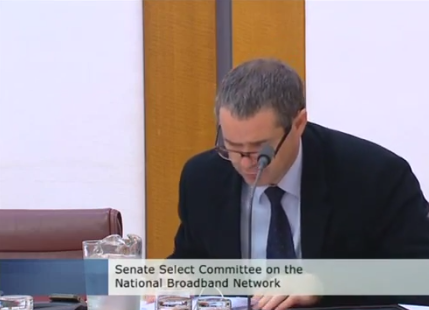Every election, the AEC releases what are effectively digitised versions of every single “formal” Senate ballot paper in the election. This year, NSW’s dataset is a 1.06GB CSV file.
Since the Senate voting rules have changed, I thought I’d have a bit of fun and take a look at how well Australians (specifically NSW voters) followed these new rules.
‘Below the line’ vs. ‘Above the line’ voting
First off, let’s look at below the line vs above the line voting. The new rules suggest voters place at least 12 boxes below the line or 6 boxes above the line. I use the word “suggest” because incomplete votes are still “saved” under new savings provisions which came with the changed rules.
Let’s take a look at the NSW breakdown of formal Senate votes:
- Below the line*: 185,387
- Above the line*: 4,234,502
- Unspecified**: 72,310
* For the purpose of this summary, ballots considered ‘below the line’ if they do not contain numbers marked ‘above the line’. Ballots considered ‘above the line’ are the inverse. ** Unspecified ballots are ballots saved by various ‘savings provisions’ and are still considered formal votes. For example, these could include ballots where the voter placed ‘1’ above the line and 2-6 below the line.
Voting below the line
The new voting rules made it easier for voters to vote “below the line”. Not only did voters not have to fill in every single box on the paper, the savings provisions are more generous than ever making more incorrectly filled ballots considered “formal”.
The missing ‘1’: Right off the rank, there is a data anomaly from these generous savings provisions. There were more below the line voters which had placed a ‘2’ in their ballot paper then voters who had placed a ‘1’ below the line. Around 2,054 “below the line” ballots neglected the ‘1’ compared to 608 voters who neglected the ‘2’.
Voting only ‘6’ below the line: Many voters also got confused with the 6 “above the line” or 12 “below the line”. Around 2.5% of NSW below the line ballots were only filled to the number ‘6’, rather than the ’12’ which was prescribed by the AEC^.
Overall compliance: Having said all of that, 96.7% of NSW “below the line” voters followed the instructions correctly and placed a number ’12’ below the line.
Beyond 12 below the line: However, the subsequent drop-off was huge. Only 48,505 ballots had the number ’13’ below the line, compared with 179,196 for the number ’12’.
It was reported that many voters were advised to 12 numbers below the line, and 12 only, which could have played a role in the substantial drop-off. However, it could also be the case that the majority of voters only want to do the “bare minimum” in terms of filling out a ballot.
Only about 26% (48,505) of below the line voters placed a ’13’ below the line. 4,332 ballots (2.34% of below the line ballots) had all 151 boxes filled in.
^ N.B. I am using the number of voters who placed a ‘6’ minus the number of voters who placed a ‘7’ anywhere below the line as a proxy for the total number of votes below the line. Further analysis is required to determine the exact number of voters who placed exactly 6 numbers below the line.
Voting above the line
Only 1 above the line: Despite a vocal campaign from the AEC to make voters aware of the changed Senate voting rules, around 6% of above the line voters continued to simply place a single ‘1’ above the line^. This was the previous above the line voting method.
Beyond 6 above the line: As with the below the line vote, there was a substantial drop off beyond the minimum number of boxes prescribed to be filled. 3,766,149 (3.8 million) voters placed a ‘6’ above the line compared with a mere 224,416 ballots with a ‘7’.
Compliance (BTL vs ATL): Interestingly, above the line voters were not quite as acute in following the AEC instructions with only 89% of above the line voters managing to place a ‘6’ above the line (compared with 96.7% BTL voters complying with the 12 number ‘rule’).
^ N.B. Derived from the number of ballots with a ‘1’ above the line minus the number of ballots with a ‘2’ below the line. This is merely a proxy. Further analysis is required to determine the exact number of voters who placed exactly 1 number above the line. Excludes ballots with both below and above the line numbering (i.e. unspecified)
Thoughts…
Here are a few take outs:
- Most voters continued to vote above the line
- A substantial number of voters continued to only place ‘1’ above the line when voting, meaning their votes were immediately exhausted after their first nominated group or candidate
- Most voters are doing the bare minimum when voting for the Senate (i.e. only filling in 6 ATL or 12 BTL).
If I had more time, I’d analyse the exact number of numbers per ballot (rather than the pseudo counting I have going on at the moment). I’d also convert ATL votes into BTL votes, which would then allow preference flow simulations to see exactly which votes ended up making the quota for the 12 NSW Senators we elected. But alas, too much data and too little time on my hands 🙂

